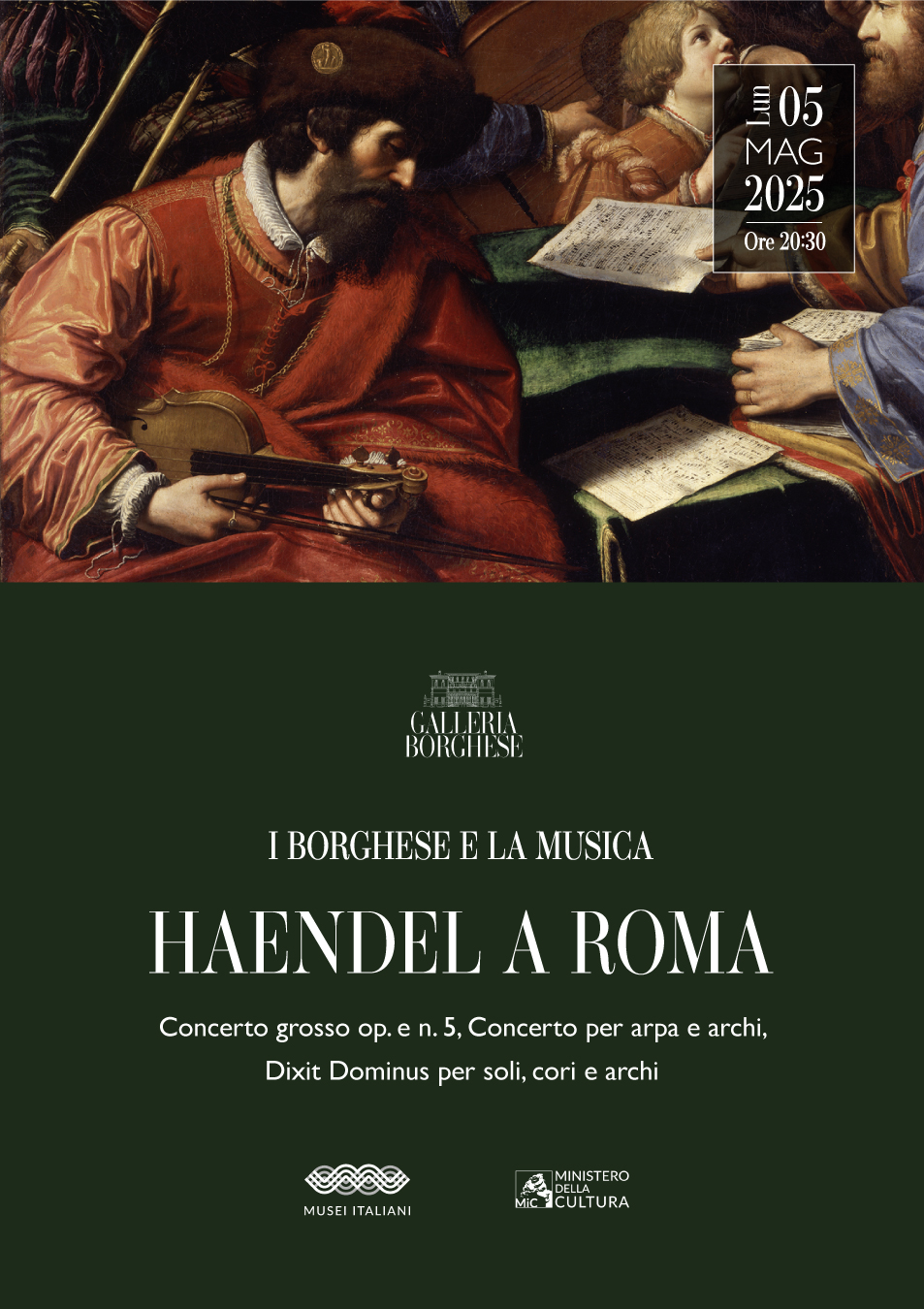HAENDEL IN ROME: CONCERTO IN B – FLAT FOR HARP AND ORCHESTRA

Monday, May 5, 2025, Galleria Borghese offers a special evening opening of the museum at 7:30 PM and at 8:30 PM, in the Sala degli Imperatori, visitors will be able to attend a live performance concert, Haendel in Rome: Concerto grosso Op. 6 No. 9, Concerto in B-flat for Harp and Orchestra, and Dixit Dominus for soloists, choir, strings, and basso continuo.
The project “Borghese and Music”, initiated by the Director of Galleria Borghese, Professor Francesca Cappelletti, and Dr. Geraldine Leardi, was created to investigate the Borghese family’s patronage and their relationships with musicians during the XVII and XVIII centuries. The project concludes with a final concert dedicated to the young Haendel and one of his major compositions, Dixit Dominus for soloists, choir, strings, and basso continuo.
Composed in Rome in 1707, Dixit Dominus is far from a youthful experiment; it reveals extraordinary power and compositional mastery. Structured into nine sections, it is infused with formidable energy and a masterful use of dramatic theatricality, only superficially concealed by the sacred nature of the piece. The ensemble — featuring a five-part choir (with two soprano sections), a string orchestra (including two distinct viola parts), and basso continuo — is challenged with agility, precision, vigorous declamation, and great expressiveness in the lyrical passages.
The concert also features two other works closely related to the research and performances held at the Galleria over the past years: Concerto grosso Op. 6 No. 9 and the Concerto in B-flat for Harp and Orchestra.
The model for Concerto grosso form is undoubtedly the Corellian one, which Haendel became familiar with during his stay in Rome between 1706 and 1709 (Corelli himself conducted performances of Haendel’s oratorios Il trionfo del tempo e del disinganno and La Resurrezione). According to biographical tradition, Haendel’s initial attitude toward the Roman master was somewhat presumptuous, though he later approached Corelli’s work with the demeanor of a respectful disciple. The Op. 6 set was published in London in 1740 by Walsh, through a subscription campaign involving influential patrons — a common practice at the time, though one Haendel seldom employed. The original title was “Twelve Grand Concertos in Seven Parts for Four Violins, a Tenor Violin, a Violoncello, with a Thorough Bass for the Harpsichord.” Concerto grosso is structured as a dialogue between a group of soloists (“Concertino” or “Soli”) and the full ensemble (“Ripieno” or “Tutti”), with the harpsichord providing continuo accompaniment.
Concerto in B-flat for Harp and Orchestra, Op. 4 No. 6, was published in 1738 as the last of a set of six concertos intended “for harpsichord or organ.” However, there is no doubt that it was originally conceived for the harp, as demonstrated by the manuscript preserved in the King’s Library of the British Museum, titled “Concerto per la harpa.” The composition of this concerto dates to the same period as the oratorio Alexander’s Feast, which premiered at the Covent Garden Theatre in London on February 19, 1736. Concerto for Harp, specifically written for the young harpist Powel, was performed during the intermission of the oratorio.
Artistic direction by Maestro Riccardo Martinini.
To purchase tickets, visit this page.
Limited availability.